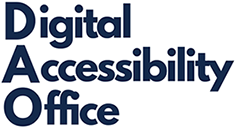Plain Language
Users are coming to your site for information. Content written in plain language can ensure that users can quickly understand and act on your content. So, how do you write content that is easy to read, understand, and use by a wide audience?
Write for Your Audience
Who is your audience?
First, you want to do your research and establish who your audience is. Are you running a UNC website that has general information for the public? Are you working on a page for a graduate class project? These two audiences bring different knowledge, vocabularies, and expectations.
Potential Audiences for UNC websites
- General Public
- UNC Chapel Hill Employees
- UNC Chapel Hill Students
- Potential Students
- UNC System
- and more…
Reading Level
For wide, general audiences you should write content at a high school reading level or lower. This isn’t about “dumbing down” your content. Rather, it is about ensuring that all users can gather, comprehend, and act on the content you are providing.
For a more targeted audience, write content and use vocabulary that accounts for that group’s current level of knowledge.
Choose Your Words Carefully
Avoid jargon, idioms, abbreviations, and acronyms that may not be familiar to your entire audience.
Design for Reading
Organize and Structure Your Content
Use semantic structure to help break content into more easy to digest pieces. These structural elements help users scan pages for the content they are after.
- headings
- lists
- simple tables
Short sentences, and small chunks of content can make a lot of information seem more manageable.
Be Concise
Only write information important to the understanding of content. Use tools such as the Hemingway App to test for wordiness and complexity.
More Info
For more information and tips visit PlainLanguage.gov.
